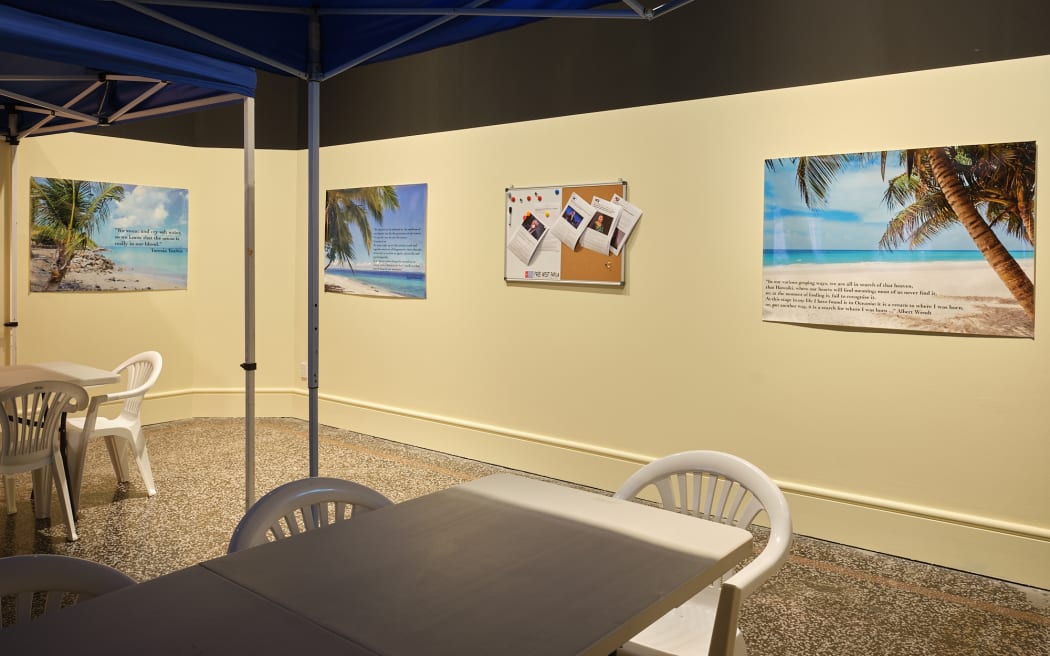
John Vea, Section 69DZ Employment Relations Act 2000, 2019. Photo: Sam Hartnett
While other kids went to kindergarten, when he was a small child Tongan New Zealand artist John Vea was on the factory floor where his father worked.
The experience has led Vea to make the relationship between factory and manual labour work and the Pacific Island community central to his performances, sculpture and installations.
Exhibition Outcast at Tamaki Makaurau’s Gus Fisher Gallery brings Vea together with fourth-generation Australian South Sea Islander artist Jasmine Togo-Brisby.
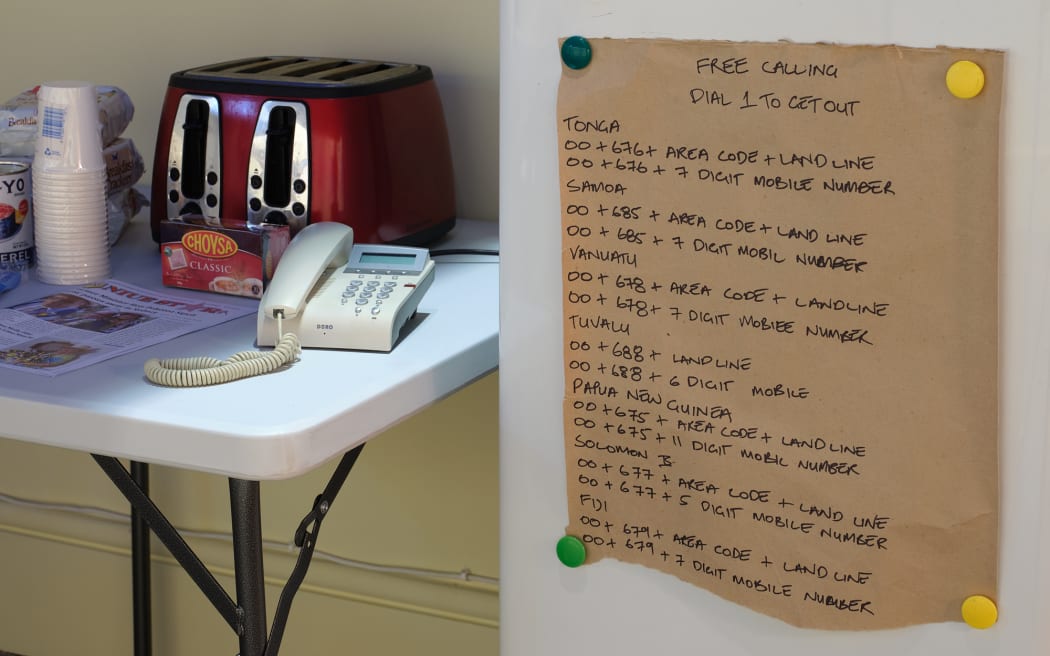
John Vea, Section 69DZ Employment Relations Act 2000, 2019. Photo: Sam Hartnett
Both artists explore the tensions, past and present, of migrant Pacific labour, asking us to think about our attitudes and labour conditions today.
As Vea draws attention to, every summer migrants come to New Zealand from the Pacific for short-term work, principally in the horticulture and viticulture sectors. The cap on the number allowed to do so has continued to increase in the face of industry calls to ease labour shortages.
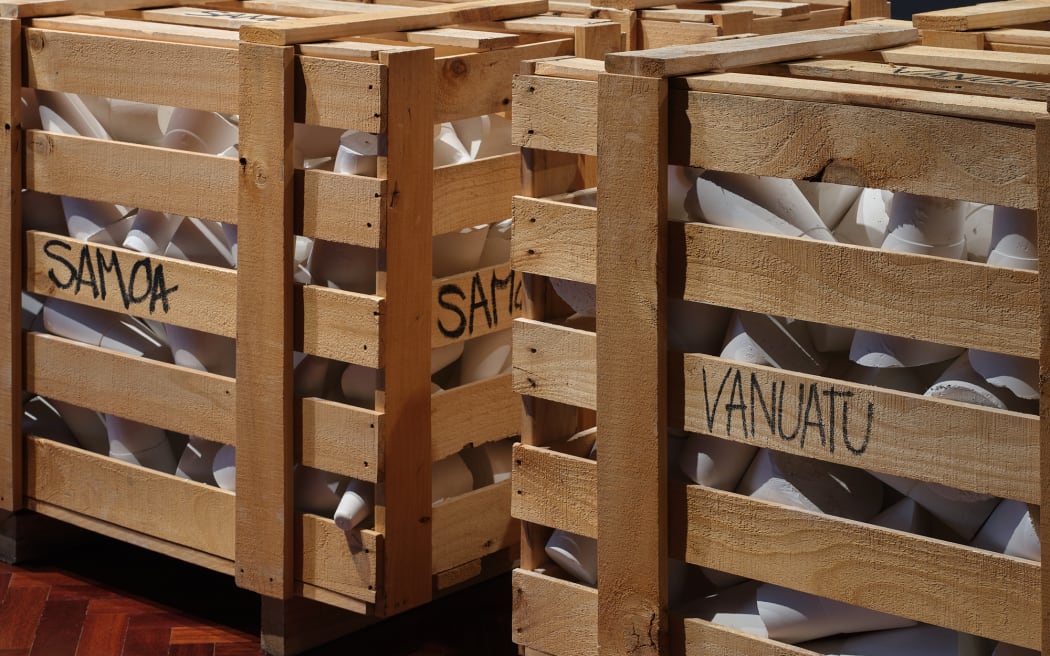
John Vea, Import/Export, 2008-2016. Photo: Sam Hartnett
But there are risks of exploitation. Last year for example migrant workers housed in Rotorua were found to be enduring unacceptable living conditions, cramming seven people to a room in breach of immigration rules. A group of Solomon Islanders took an employer to court over the hours worked and deductions to their minimum wage.
Exploitation of Pacific workers is nothing new. In the mid 19th century thousands were kidnapped from their homelands and brought to work in Australia as slaves. A practice termed blackbirding. This included Togo-Brisby’s ancestors, who are described as Australian South Sea Islanders.
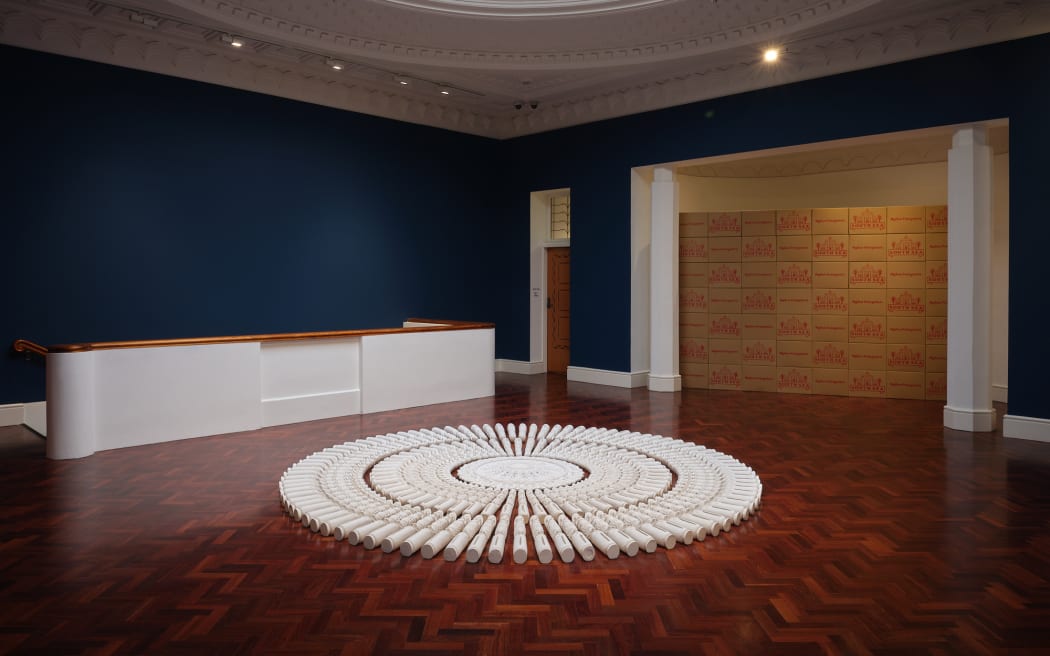
Jasmine Togo-Brisby, Hold, 2023. Right: Jasmine Togo-Brisby and John Vea, $22.70 per hour, 2023 Photo: Sam Hartnett
This forms the background to Jasmine Togo-Brisby’s work. Her work at Gus Fisher references tourism in Vanuatu - where her ancestors were taken from - and designs of ornate pressed-tin panels by the Sydney-based Wunderlich family, who were implicated in it.
For the exhibition John and Jasmine have collaborated on t-shirts which can be bought for the price tag of the hourly minimum wage: $22.70. The shirts are inspired by the Australian workwear brand Hard Yakka, and Togo-Brisby's shirt sees the Chelsea Sugar refinery logo with the words ‘Chelsea Sugar’ replaced by ‘South Sea’ - her identity.
Outcast runs until 27 January at Gus Fisher Gallery, Auckland
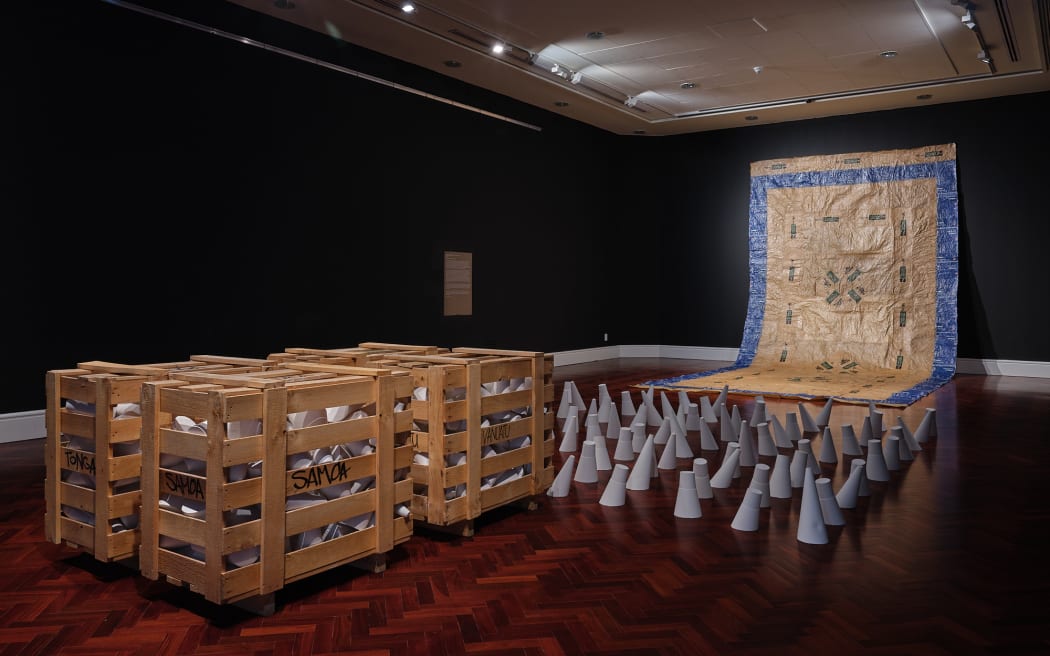
John Vea, Import/Export, 2008-2016. Centre: John Vea, Import/Export, 2008-2023. Right: Jasmine Togo-Brisby, Monopoly, 2023. Photo: Sam Hartnett

